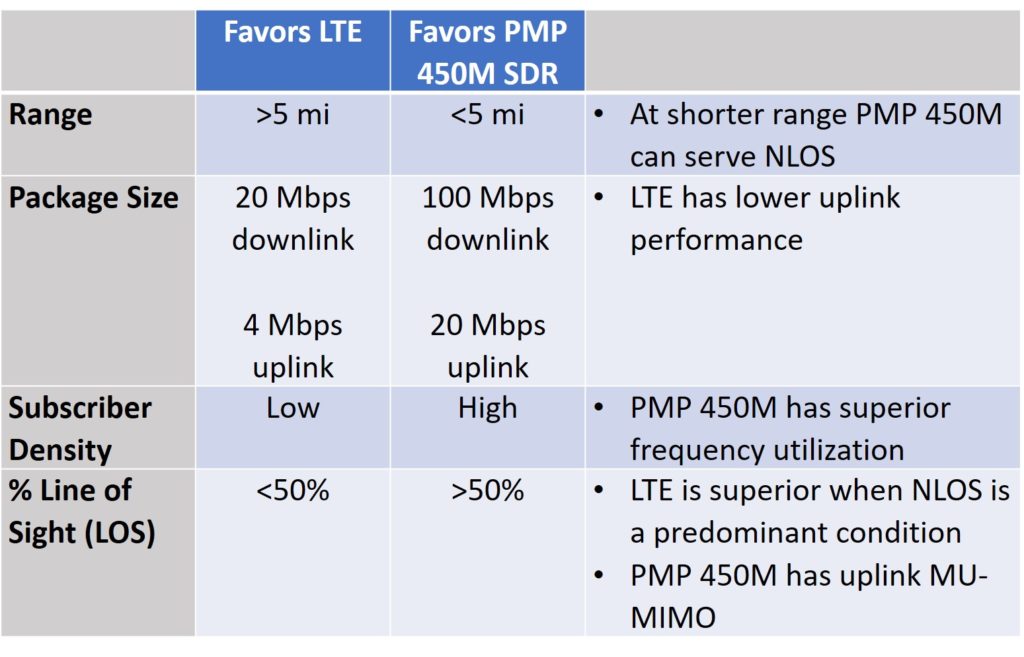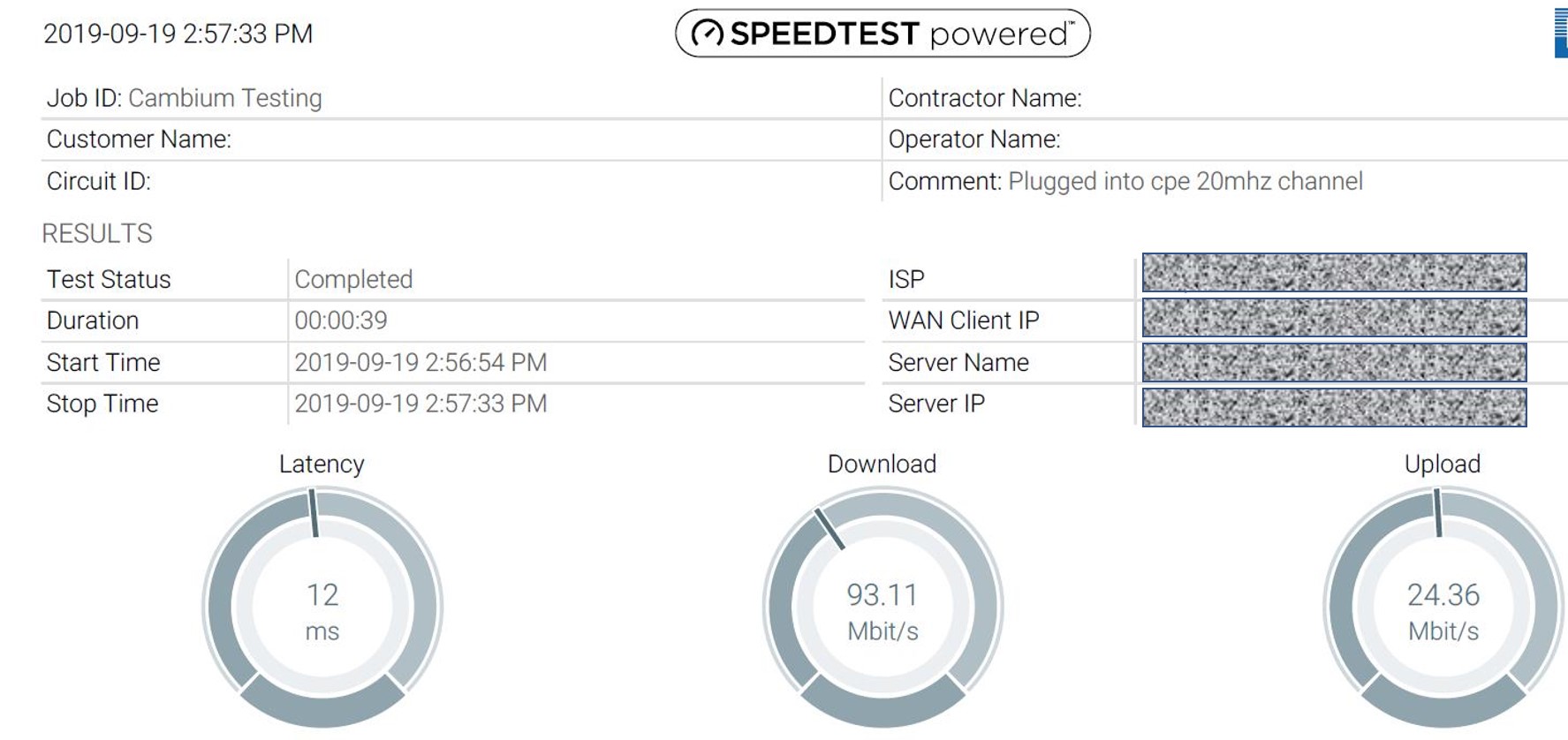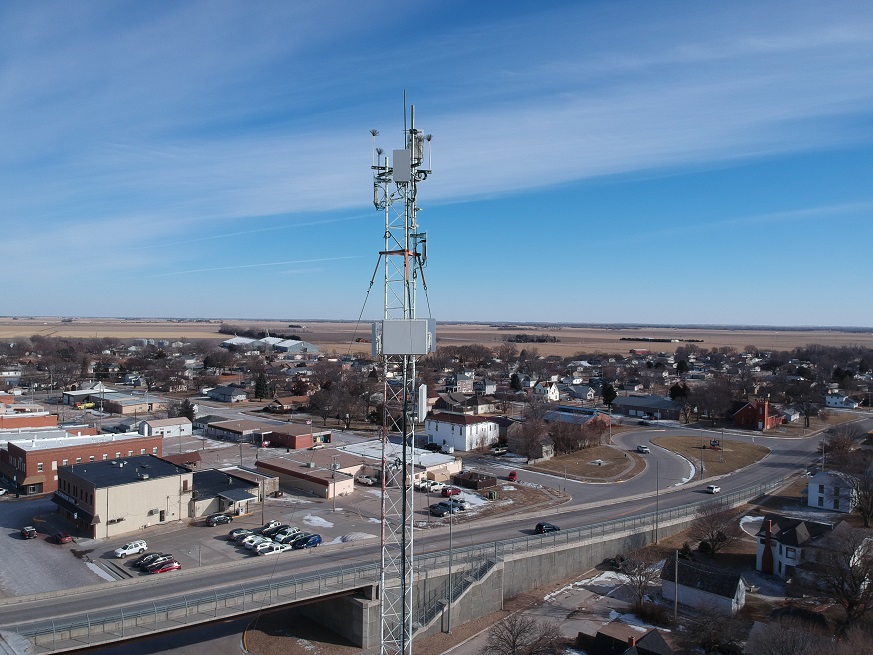RF spectrum is a limited resource, and the FCC just made more of it available to connect the unconnected. But how do network operators make the best use of the new frequencies released by the FCC?
CBRS, or the Citizens Broadband Radio Service, is 150 MHz of spectrum in the 3.5 GHz frequency band. Ranging from 3550-3700 MHz, 80 MHz of the band is reserved for General Authorized Access (GAA). GAA is unlicensed and available for wireless internet service providers (WISP) to use, provided the radios connect with the Spectrum Access System (SAS).
The CBRS band will allow WISP’s to use a band that will allow for 13 times more power and at a lower frequency than the existing 5 GHz systems, where service providers have more than a decade of experience and a proven business case in delivering broadband services to business and residential subscribers.
The advantages of the new frequency bands are:
- longer range
- less interference
- improved near and non-line of sight performance
Before deploying a solution to take advantage of this opportunity, service providers should determine which technology will provide the best return on investment (ROI). Of course, not all fixed wireless deployments are the same. There are many variables that will need to be considered. Network operators need to consider:

- The desired range to achieve between the tower and the subscriber
- The service packages to be offered
- The subscriber density to achieve
- The percentage of the addressable market that are near and non-line of sight
- Which line of sight solutions to deploy. Options include:
- Raising subscriber modules using poles or towers
- Deploying micro pops closer to subscribers
- Deploying access points at higher elevations
- How to control costs
- Is the CBRS technology similar to current equipment deployed and not overly complex
- Can we reduce failed installs with predictable coverage?
With an estimate of these factors, a service provider can begin to determine the best technology to deploy.
There are two baseband technology choices for CBRS:
- LTE based solutions
- Software defined radio (SDR) solution such as in the PMP 450M from Cambium Networks
The biggest advantage of LTE is potentially better performance in non-line of sight situations and lower cost subscriber modules.
The advantages of a software defined radio are much longer equipment lifespan, simpler design and deployment, superior uplink performance, and superior density per AP.
Consider each of these factors individually:
- Non and near line of sight – There is no question that in deploying fixed wireless that the best solution for non-line of sight is to get line of sight. If the subscriber module deployment strategy is flexible and allows for creative methods to gain line of sight the network operator will improve the important design metric: percent of subscribers with line of sight. Cambium Networks has a planning tool that can accurately predict if LTE or Cambium SDR is a better cost model. What the model shows in most cases is that if the percent of line of sight subscribers is greater than 50% then the Cambium solution is more cost effective Than the LTE solution. This is especially true if the range is kept below 5 miles.
- Desired package type – There is no question that bandwidth demands are increasing. To be successful, network operators will need to be able to offer packages greater than 100 Mbps downlink and 20 Mbps uplink. LTE is optimized for mobile use. While downlink operation meets requirements, one of the constraints is that LTE is designed with less than optimal uplink capability. LTE can mitigate this weakness with uplink carrier aggregation. However, this capability is expensive, complex and uses a lot of spectrum, which may not be available. The Cambium PMP 450 Medusa SDR technology utilizes 8X8 MU-MIMO transmission and has demonstrated consistent 100 Mbps downlink and 20 Mbps uplink using only 20 MHz of spectrum at ranges up to 5 miles. Below is one real world, real customer, speed test report that aligns with many others observed.

- Subscriber density – To build a fixed wireless network, network operators need to deploy access points that support a maximum number of subscribers per AP. In low-density deployments, a high capacity AP is overkill and a waste of money. However, as density increases then AP subscriber density becomes important. It is not just the cost of the AP’s but the more important constraint is spectrum availability. High-density AP’s use less spectrum per user because of MU-MIMO and beamforming techniques.
- Lifespan – Software defined radios have a significantly longer life span. To add new features, software defined radios can be upgraded remotely and do not require a hardware replacement. LTE radios in most cases are using a baseband FPGA chip that cannot always be upgraded to the latest technology. This has been shown over the evolution of 3GPP to date. The Cambium Networks PMP 450M has deployed 14 versions of software over the last 10+ years. Cambium’s current release still supports PMP 430 which was originally launched in 2010.
- Complexity – Time is money. LTE is complex. Training requires time and money, and so do the management tools and associated training required to deploy LTE. At a minimum, LTE must have an Evolved Packet Core (EPC). Even in integrated configurations, the system still needs to be provisioned. If the existing network includes the Cambium PMP 450M with cnMedusa technology, the CBRS solution uses the same management tools and provisioning interface that WISPs have been using to support their needs.
- Subscriber module costs – In most cases, the CPE cost for LTE is lower than for SDR radios. However, the cost differential is not as significant as may have originally been thought. Yes, the base silicon of LTE is less expensive because of the economy of scale. However, CBRS will not support indoor consumer-grade subscriber equipment. As such, regardless of the base band choice, they each require similar outdoor enclosed solutions and integrated antennas so in the end, the price difference between the two is not as significant as may have been expected.
Conclusion
The base band technology that network operators choose to use when deploying CBRS is an important decision. The ROI for each technology is based on complex assumptions. However, when the network operator breaks it down to each of the issues and weighs the factors for each, the ROI calculation will make the right choice become obvious.
